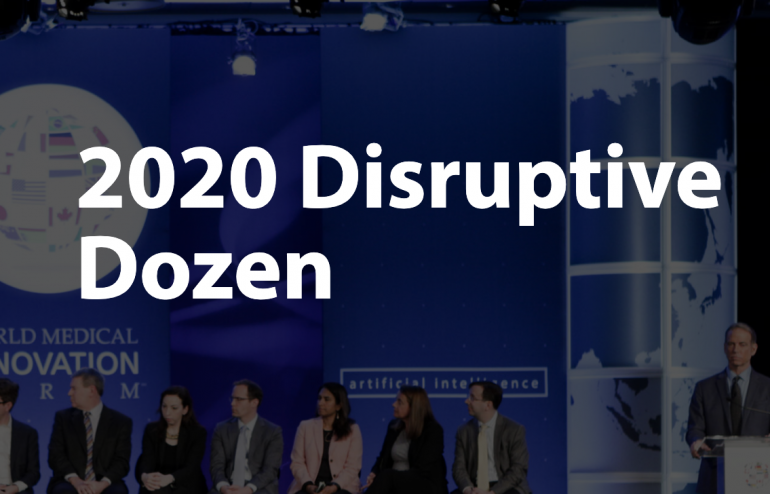Dr. Gregg Meyer, professor at Harvard Medical School and Chief Clinical Officer of Partner Healthcare, says in the 6th World Medical Innovation Forum (2020 WMIF) that the unsolicited new coronavirus (Covid19) has changed everything. The routine right now is changes happening every day. I summarize some of the insights to this month’s newsletter and hope we learn and grow, especially in the tremendous transformation of the global healthcare landscape.
A new coronavirus (Covid19) attacks indiscriminately. The synergy of the global healthcare community should be strengthened rather than fragmented. On public health, AI and big data should play a role in enabling real-time interaction between doctors and patients and networking with home care. Meanwhile, the implementation of Care Delivery based on reducing physical Contact between doctors and patients should continue to innovate and transform the existing hospital physical space. The trend towards de-globalization does not affect the global healthcare collaboration system that has emerged.
- According to Dr. Karen DeSalvo, chief health officer of google health, people are willing to provide their personal information in secure and encrypted ways to the public health system, thus enabling the public health sector to obtain more sufficient data to establish various monitoring models and algorithms for epidemics. While AI currently works only for known diseases, Bayer’s senior vice president Dr. Mike Devoy says there seems to be a natural consensus among different organizations around the world to open up data, innovate and collaborate to develop new drugs and vaccines.
- In the new normal of coexistence with the virus, we have to innovate our care delivery routine to reduce physical contact between medical staff and patients. For instance, the waiting area of the hospitals and clinics should be redesigned to perform initial screening for cross-infection prevention. We also consider various technologies to implement bed to bed, ward to ward communications, which ultimately reduce face to face contact. Tele-medicine, internet hospitals are effective ways to reduce the frequency of outpatient.
- In the future, digital home care will become an essential part of public health. Families will adopt consumer devices to extract the health and vital signs data automatically. And automatically connect with care delivery institutions to complete the diagnosis, health warning, and risk evaluation, and completing the Internet medical treatment process. Among them, the chronic disease population will be the focus of public health.
- In the face of growing anti-globalization sentiment, Thermo Fisher Scientific chairman and chief executive Marc Casper said the product could not be delivered without 20,000 employees‘ teamwork in different countries and different functions. Now is the time to strengthen global cooperation, such as in small countries such as Cambodia. They can not localize medical products, some middle-sized countries in Europe, but also need participation from other regions to complete medical services.
The ”Disruptive Dozen” results from interviews of one hundred Mass General Brigham senior Harvard faculty followed by a rigorous selection process to identify the twelve mostly likely to have significant impact on healthcare by the end of 2021.
#1 | Battling COVID-19: Maps, Technology, and AI
Mapping the spread of infectious diseases within communities is more important than ever as the novel coronavirus continues to sweep across the globe. Researchers are harnessing AI, technology, and advanced data analytics to map the spread of COVID-19 and identify those infected with the virus.
#2 | Harnessing Technology to Reduce Health Disparities
Health is determined not just by genes, diet, and exercise, but also by the environments where people live, learn, work, and play. New technologies are emerging to help reduce health disparities and improve health outcomes.
#3 | Digital Management of Chronic Disease
Chronic diseases are a major challenge for patients and health care systems alike. In 2016, the U.S. spent over a trillion dollars caring for patients with heart disease, diabetes, cancer and other chronic conditions. Find out how technology could help improve care for these patients — and lower costs.
#4 | Solving the Problem of Infection in Total Joint Replacements
Total joint replacement is an increasingly common procedure. For most patients, recovery is uneventful and lasts a few months, but some experience a much more complicated and painful journey due to infection in the artificial joint. Find out how researchers are harnessing technology to help address this problem.
#5 | New Tools to Help Aging Eyes and Ears
Like many parts of the body, the eyes and ears can deteriorate with age, making them vulnerable to disease and loss of sensory functions. Find out how new technologies and treatments could help patients and clinicians better protect these organs from age-related decline.
#6 | Gene Therapies Transform Treatment of Rare, Devastating Diseases
The emergence of the first gene therapies for clinical use signaled a watershed moment in the history of medicine. This treatment modality will do ever more in the coming year for patients, especially those with rare genetic conditions.
#7 | New Therapeutic Options for Sickle Cell Disease
Millions of people worldwide suffer from sickle cell disease. While the cause of this debilitating blood disorder has been known for half a century, only two drugs are currently available to treat it. New developments are on the horizon that could help transform the management of a disease that has too often been overlooked.
#8 | Keeping Transplant Organs Fresher for Longer
Over 120,000 people in this country are now waiting for an organ transplant. What if it were possible to increase the time that organs can be safely stored outside the body prior to transplantation? Scientists are working to drive innovation in this area in an effort to expand the pool of donor organs available for those who need them.
#9 | First Disease-Modifying Therapy for Alzheimer’s Disease
The world lacks a meaningful treatment for Alzheimer’s disease, a progressive, debilitating neurodegenerative condition that affects millions across the globe. But that could change later this year, when the FDA is expected to weigh in on a novel drug that targets clumps of protein in the brain known as amyloid plaques. If approved, the drug would mark the first disease-modifying therapy for Alzheimer’s disease.
#10 | Making Cells Larger to See Them More Clearly
Visualizing cells at high-resolution is a cornerstone of modern biology and medicine. For more than a century, as scientists yearned to observe biological structures with greater power and clarity, they built more advanced microscopes. Yet today, even those sophisticated tools have limits. See how researchers are developing a innovative new approach to cell visualization.
#11 | Video Games for Stroke Patients
Each year in the U.S., some 800,000 people suffer from a stroke. For those who survive, recovery often includes intensive physical and cognitive therapy to help regain functions that have been lost or impaired. But this can be a long, difficult journey that tests patients’ fortitude — and their wallets. See how clinicians are looking to help increase patient motivation and compliance as well as increase access to rehabilitation services. In the below video, Ross Zafonte, DO provides perspective on the technology.
#12 | Reducing the Burden of Prior Authorizations
A widely used administrative tool in U.S. health care, which is meant to control costs while ensuring quality, is getting a major overhaul. The tool, known as prior authorization, requires physicians to first obtain approval from insurance companies for certain treatments in order for them to be covered by patients’ insurance plans. See what could save clinicians time as well as some $450 million for the health care industry. In the below video, Marcela del Carmen, MD provides perspective on the technology.
Authors
ANDY YU |Bio| Andy@tmfox.com
Mr. Yu founded TMFOX VENTURE PARTNERS in Shenzhen in 2009. He has been committed to building an innovative investment banking business platform that integrates incubation, acceleration, and investment to enhance the growth of high-tech companies, and has actively participated in it. To the construction of the science and technology service system of the Guangdong-Hong Kong-Macao Greater Bay Area Regional Government. In 2015, TMFOX’s virtual incubation model was promoted nationwide by the Policy Research Office of the State Council as a representative institution. In 2017, he cooperated with the School of Management and Engineering of Central University of Finance and Economics to set up an entrepreneurial innovation experimental class and acted as a technical innovation course tutor. In 2018, the experimental class became a demonstration project of university education reform by the Ministry of Education. In 2018, TMFOX’s professional virtual incubation system was established as the technology incubation industry standard by Guangdong Province. Mr. Yu has been working on North American healthcare research and collaborative implementation of project resources in China since 2015. Currently he focuses on managing Worldiscoveries (North American Medical College Alliance), UW (University of Washington) School of Life Technology, UBC (University of British Columbia) ) Collaborative R & D and technology marketization of medical schools.







